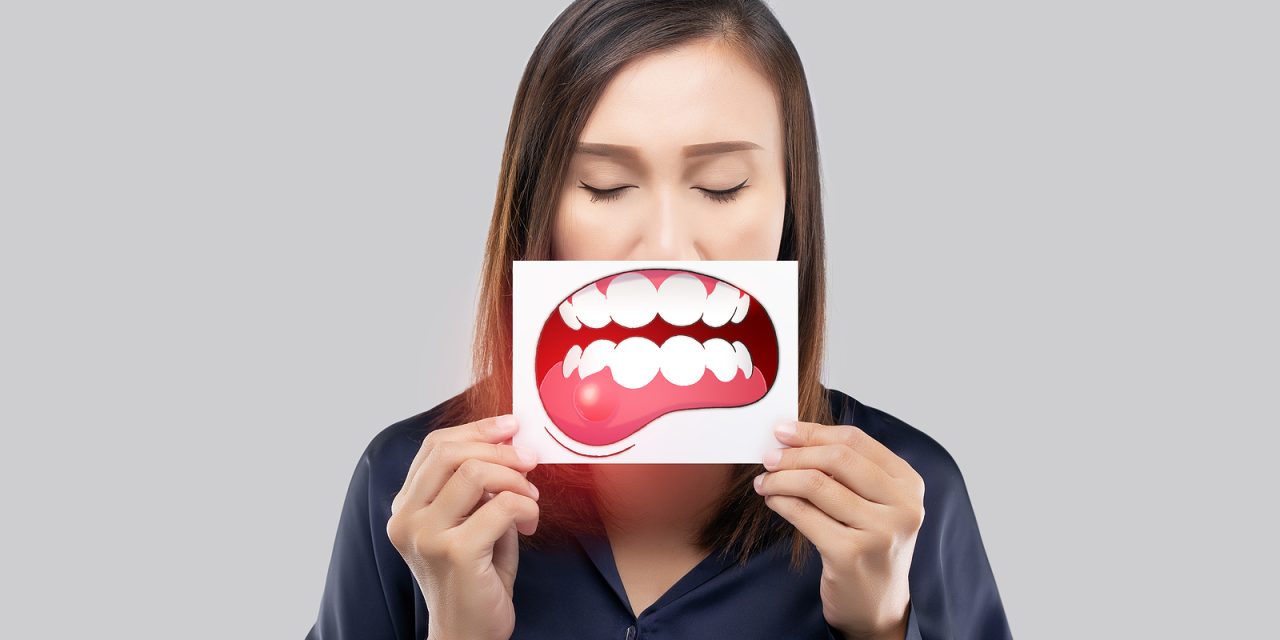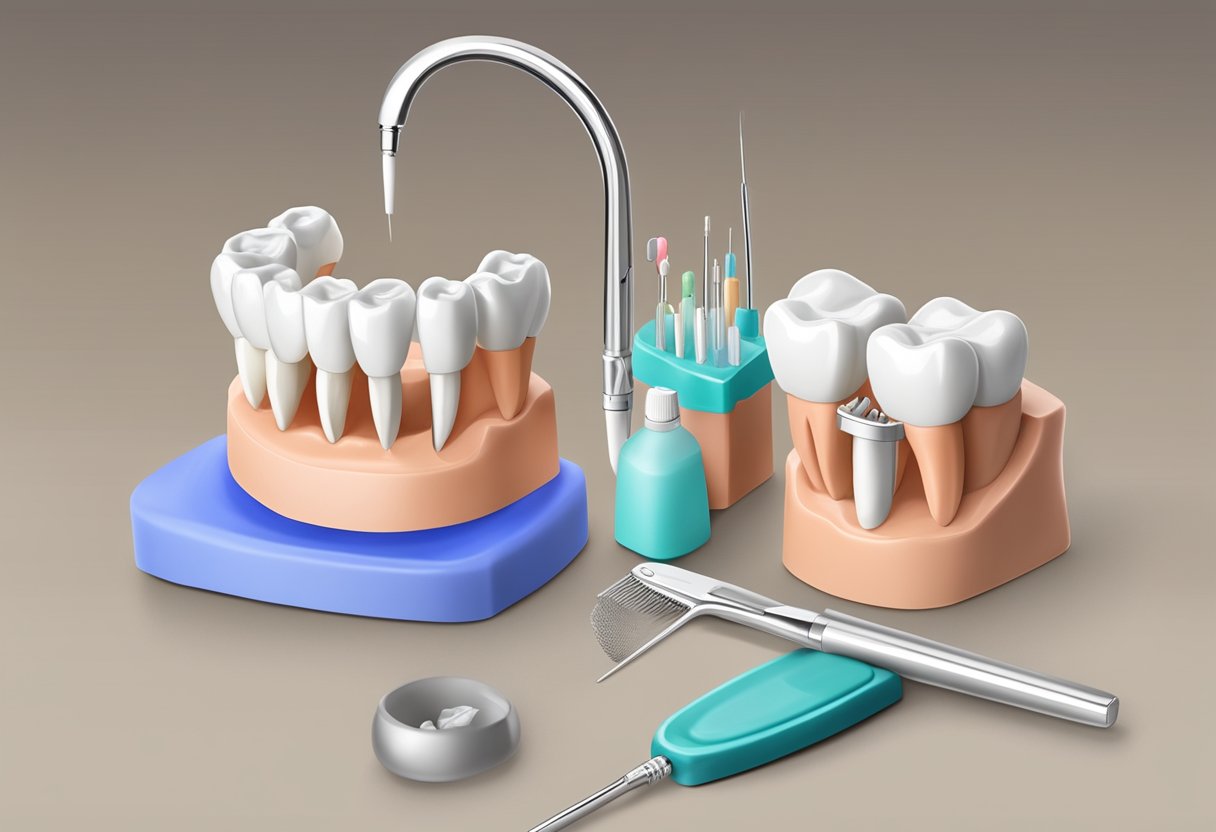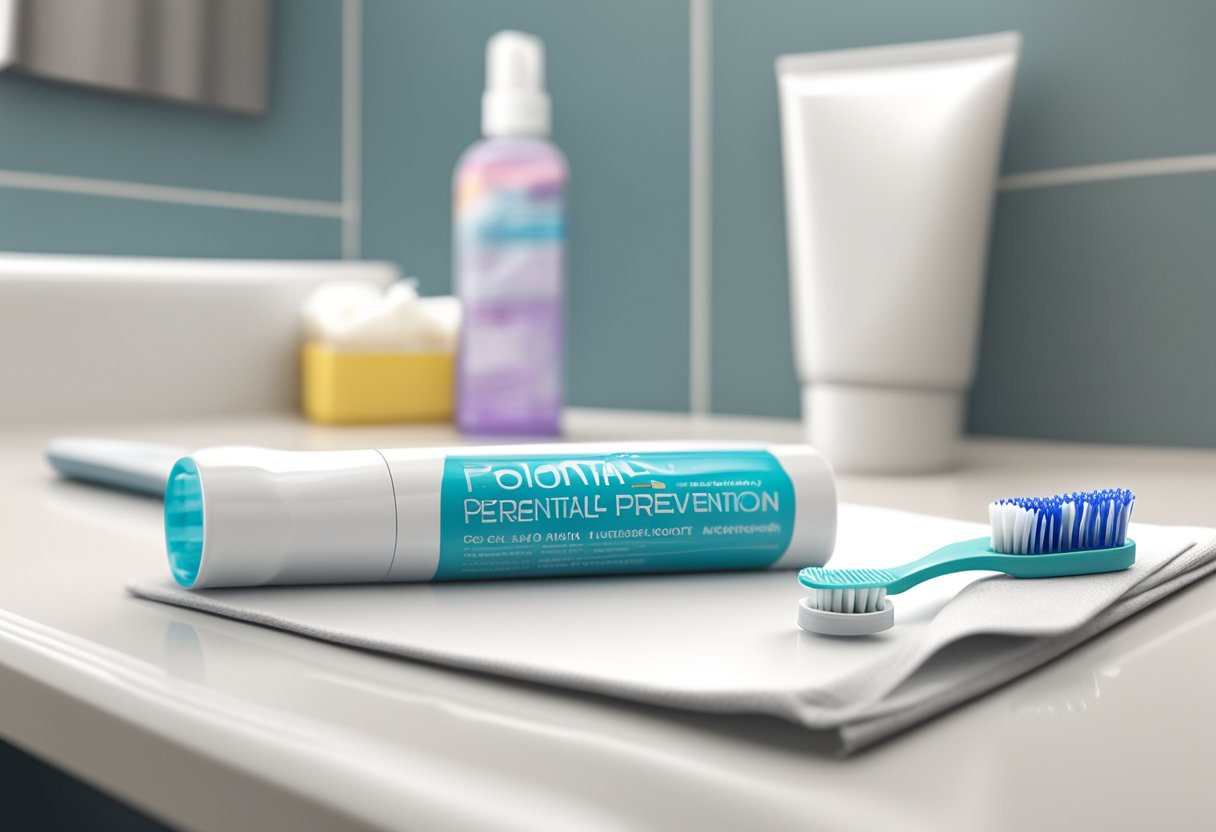Periodontal disease, commonly known as gum disease, is a prevalent condition that can lead to serious dental problems, including tooth loss. It is typically caused by a build-up of plaque, a sticky film of bacteria that forms on teeth. If plaque is not removed, it can harden into tartar and lead to inflammation of the gums, or gingivitis, which may progress to periodontal disease. The symptoms of periodontal disease often include swollen or bleeding gums, persistent bad breath, and loose teeth, indicating damage to the soft tissue and bone supporting the teeth. Addressing the condition at home involves improved oral hygiene and lifestyle adjustments to support dental health.
Treatment options depend on the severity of the disease. While milder cases may be managed at home through rigorous oral care routines such as regular brushing, flossing, and the use of antiseptic mouthwash, advanced cases require professional dental intervention. In addition to adopting a diligent oral health regimen, incorporating a balanced diet and avoiding tobacco use are crucial steps in managing and preventing further progression of periodontal disease. Home treatments may also include natural remedies like salt water rinses, which can soothe inflamed gums and reduce bacteria.
Key Takeaways
- Periodontal disease, involving symptoms like bleeding gums and bad breath, requires meticulous oral hygiene.
- Treatments range from at-home care to professional dental interventions depending on severity.
- Prevention is crucial, emphasizing proper dental care, a healthy diet, and lifestyle modifications.
Understanding Periodontal Disease
Periodontal disease affects the tissues supporting the teeth, with severity ranging from simple gum inflammation to serious disease resulting in major damage to soft tissue and bone. Proper knowledge is essential for prevention and management.
Defining Periodontal Disease
Periodontal disease, also known as gum disease, is an infection caused by bacteria that can deteriorate the supporting structures of the teeth. It begins as gingivitis, a mild form affecting only the gums, but can progress to periodontitis, which can lead to loss of teeth.
Common Causes and Risk Factors
- Age: Older individuals have a higher prevalence of periodontal disease.
- Tobacco use: Smoking is strongly associated with the onset and progression of gum disease.
- Diabetes: People with diabetes are at a higher risk due to potential blood sugar management issues.
- Hormonal changes: Such changes, especially in women, can make gums more sensitive and susceptible.
- Genetics: A family history of dental disease can increase one’s risk.
Recognizing the Symptoms
The symptoms of periodontal disease often include:
- Swollen or bleeding gums
- Persistent bad breath
- Painful mastication
- Sensitive teeth
Recognition of these signs is crucial for early intervention and better outcomes.
Progression and Stages of Periodontitis
Periodontitis progresses through stages:
- Initial stage: Gums become red and swollen, and bleeding may occur during brushing.
- Moderate stage: Destruction of soft tissue and bone begins, and teeth may become loose.
- Advanced stage: Teeth are at risk of being lost as the disease severely affects the integrity of the supporting bone.
Understanding these stages helps in recognizing the seriousness of the disease and the urgency of treatment.
Oral Hygiene Fundamentals
Maintaining optimal oral hygiene is critical in preventing and managing periodontal disease. This section focuses on the fundamental practices of home oral care that are essential in mitigating tartar and plaque buildup, which are primary contributors to gum disease.
Proper Brushing Techniques
One should brush their teeth twice daily for two minutes each time. The angle of the brush should be at 45 degrees to the gums, utilizing short back-and-forth strokes. It is imperative to brush the outer, inner, and chewing surfaces of the teeth, being gentle near the gums to prevent damage.
The Importance of Flossing
Flossing daily is essential in removing plaque and food particles that a toothbrush cannot reach. It helps to prevent tartar build-up along the gumline, thus reducing the risk of periodontal disease. A correct flossing technique involves gently sliding the floss between the teeth and forming a ‘C’ shape around each tooth’s base.
Choosing the Right Toothbrush
The toothbrush should have soft bristles to minimize gum and enamel erosion. An individual should replace their toothbrush every three to four months or sooner if the bristles become frayed. Electric toothbrushes can be more effective in plaque removal due to their ability to provide consistent brushing motion.
Professional Dental Care
Effective management of periodontal disease often necessitates professional care to prevent its progression. Dental professionals play a pivotal role in diagnosing and treating this condition with precision and expertise.
Regular Dental Check-Ups
Dentists recommend that patients schedule regular check-ups to catch periodontal issues early. During these visits, a dental professional will examine the gums for signs of inflammation, check for pocket depths around the teeth, and look for any bone loss indicative of periodontal disease. Early detection and treatment are essential for the best prognosis.
Deep Cleaning Procedures
Professional dental cleanings go beyond the scope of standard at-home brushing and flossing. Scaling and root planing are two common deep cleaning procedures that address periodontal disease. Scaling involves the removal of tartar and bacteria from tooth surfaces and below the gum line, while root planing smooths the roots to help prevent future tartar buildup and assists in reattaching gums to the teeth. These procedures help to reduce inflammation and improve the overall health of the gums.
When to See a Periodontist
For cases that require more specialized care, a referral to a periodontist may be necessary. This dental specialist is trained to manage severe periodontal disease. They perform more complex procedures, such as professional dental cleaning specifically tailored to advanced periodontal conditions, and can also provide surgical treatment options. If a patient exhibits extensive gum recession or deep periodontal pockets, seeking care from a periodontist is advisable to help halt the disease’s progression.
At-Home Treatments and Remedies
Maintaining healthy gums is critical to overall dental health, and there are effective at-home treatments and remedies that can support and even improve gum condition. These methods focus on consistent oral care routines, natural remedies to enhance gum health, and the use of mouthwashes that can help treat and prevent periodontal issues.
DIY Gum Health Routines
Good oral hygiene is the first line of defense against periodontal disease. This includes twice-daily brushing with fluoride toothpaste, which helps prevent the build-up of plaque that can lead to gum disease. Flossing daily is also imperative to remove food particles and plaque from between teeth that a toothbrush cannot reach.
- Daily Oral Care:
- Brush teeth twice for two minutes with fluoride toothpaste.
- Floss at least once a day to remove plaque between teeth.
Natural Remedies for Gum Care
Several natural remedies have been suggested to help soothe inflamed gums and reduce bacteria in the oral cavity. Saltwater rinses can help reduce bacteria and inflammation. Additionally, certain essential oils like tea tree oil have antiseptic properties and may be beneficial when used as diluted mouthwashes; however, individuals should consult their doctor first as these oils can interact with medications.
- Natural Remedies Include:
- Saltwater rinse to reduce inflammation.
- Diluted tea tree oil as an antiseptic (after consulting a doctor).
Effective Home Mouthwashes
Mouthwashes can play a significant role in the at-home treatment of periodontal disease. They reach places that brushing and flossing might miss and can help reduce the overall bacterial load in the mouth. Over-the-counter antiseptic mouthwashes containing ingredients such as chlorhexidine can effectively control plaque and gingivitis. Also, homemade mouthwashes like lemongrass oil and other natural ingredients can provide symptomatic relief.
- Mouthwash Options:
- Over-the-counter antiseptic mouthwashes with chlorhexidine.
- Homemade mouthwashes with lemongrass oil for symptomatic relief.
Using these at-home treatments and remedies, individuals can address the symptoms of periodontal disease and contribute to healthier gums. However, while home care is essential, regular professional cleanings and check-ups with a dentist should not be overlooked.
Diet and Lifestyle Adjustments
Making the right diet and lifestyle adjustments can play a significant role in treating and managing periodontal disease. These changes not only improve oral health but also contribute to overall well-being.
Nutritional Considerations
A diet rich in nutrients is essential for combating periodontal disease. Incorporating foods like leafy greens and peppers high in Vitamin C, alongside others packed with vitamins and antioxidants, support gum health. Dietary fiber is beneficial, too, as studies suggest that a high-fiber, low-fat diet may improve symptoms of periodontal disease.
Impact of Smoking and Tobacco
Smoking and the use of tobacco products are detrimental to gum health. They contribute to the buildup of plaque and tartar, which can exacerbate periodontal disease. Quitting smoking and avoiding tobacco in any form is critical to reducing gum inflammation and improving the body’s ability to heal tissues, including those affected in the mouth.
Managing Diabetes for Gum Health
Individuals with diabetes are at a higher risk for developing periodontal disease. It is crucial to maintain stable blood sugar levels as uncontrolled diabetes can lead to an increase in gum infections. Following a balanced diet and monitoring blood glucose can diminish the risk of gum disease and its progression.
Adjunctive Therapies and Medications
Adjunctive therapies and medications can play a crucial role in managing periodontal disease at home. They are often used in conjunction with mechanical cleaning methods like brushing and flossing to enhance overall oral health.
Over-the-Counter Options
Patients may employ over-the-counter options such as antiseptic mouthwashes to help reduce bacterial load in the oral cavity. These mouthwashes can be beneficial as a short-term intervention to control harmful bacteria associated with periodontal disease.
Prescription Medications
For more advanced cases, dentists may prescribe oral antibiotics to target persistent gum infections. Antibiotic gels applied directly into gum pockets post-scaling and root planing may be recommended to help control infection and aid the healing process—information relayed by Mayo Clinic affirms the utility of such approaches.
The Role of Fluoride
Fluoride plays a protective role by reinforcing tooth enamel and mitigating the risk of cavities, which can exacerbate periodontal conditions. It is usually found in toothpaste and can also be applied in higher concentrations through varnishes or gels by dental professionals.
Advancements in Periodontal Treatment
Recent developments in periodontal treatments offer new hope for managing and potentially reversing the effects of periodontal disease. These cutting-edge techniques focus on minimally invasive methods, improved patient comfort, and enhanced results in tissue regeneration.
Laser Therapy
Laser therapy has emerged as a significant advancement in treating periodontal disease. Dentists now use dental lasers to target infected gum tissue with precision, reducing damage to surrounding healthy tissue. The use of lasers also diminishes bleeding, swelling, and discomfort for the patient.
Innovative Surgical Techniques
Surgical advancements, such as flap surgery and bone grafting, have greatly improved periodontal care. Flap surgery involves lifting the gums to remove tartar deposits in deep pockets. The area is then sutured back to promote healing and to reattach the gums to the teeth. Bone grafting is often employed when the disease has destroyed the bone surrounding the tooth root. It involves placing natural or synthetic bone in the area to promote bone regrowth, providing stability for the teeth.
Understanding Tissue Regeneration
Guided tissue regeneration (GTR) represents a pivotal enhancement in regeneration therapy. This technique uses biocompatible membranes to direct the growth of new bone and gum tissue at sites where they have been destroyed. Meanwhile, soft tissue grafts are employed to replace or reinforce thin and receding gums, contributing to the periodontal health and aesthetic appearance of an individual’s smile. With GTR and soft tissue grafts, the aim is to restore periodontal health by regenerating lost tissues and supporting bone structure.
Recognizing and Managing Complications
Managing periodontal disease at home involves vigilant monitoring for any complications that may arise. Not only is it crucial to identify signs of infection and inflammation early, but also to understand how tooth loss can occur and its consequences. Additionally, it’s important to be aware of the potential connections between periodontal disease and systemic health conditions like heart disease and stroke.
Identifying Infection and Inflammation
Infection and inflammation are primary concerns in periodontal disease. Signs of infection include redness, swelling, pain, and the presence of pus, which requires prompt attention to prevent further damage. Inflammation may manifest through red, puffy gums, or bleeding when brushing or flossing. Both infection and inflammation can lead to bone loss, undermining the structural support of teeth.
Dealing with Tooth Loss
Periodontal disease can cause tooth loss, which is often preceded by symptoms such as loosening of the teeth or gaps appearing between them. When tooth loss occurs, it is paramount to consult a dental professional to discuss replacement options, like implants or bridges, and to maintain proper occlusion and chewing function.
Connection to Systemic Health Conditions
The management of periodontal disease is not only significant for oral health but also plays a role in overall systemic health. Research has linked periodontal disease with an increased risk of heart disease and stroke due to the potential of oral bacteria entering the bloodstream. It is therefore essential for individuals to maintain diligent oral hygiene and seek regular dental check-ups to mitigate these risks.
Prevention and Long-Term Care
Achieving optimal oral health involves discipline and consistency. This section outlines concrete steps and routines one should adhere to for the prevention of periodontal disease, maintaining gum health, and ensuring regular care to avert oral health issues.
Preventative Measures
To prevent periodontal disease, one must adhere to a stringent oral care regimen. This includes twice-daily brushing with fluoride toothpaste and flossing once a day to remove plaque, the primary cause of gum disease. Diet is equally important; one should limit sugary snacks and drinks that can contribute to plaque buildup. Utilizing a Waterpik Water Flosser can enhance plaque removal and gum health.
Maintaining Healthy Gums
Maintaining healthy gums is not solely about routine cleaning. One has to ensure they are using the right techniques. Angling the brush at a 45-degree angle towards the gums and using short, gentle strokes are crucial to avoid damaging delicate gum tissue. It’s also advisable to replace one’s toothbrush every three to four months or sooner if the bristles are frayed, to maintain effectiveness.
Regular Monitoring and Recare
Regular dental check-ups, ideally every six months, facilitate the early detection and treatment of periodontal disease. Dentists can perform professional cleanings to remove tartar that can’t be eliminated by brushing and flossing alone. Moreover, dentists can employ procedures such as scaling and root planing if necessary, which can halt the progression of gum disease and help gums recover.
Conclusion
Periodontal disease requires diligent care and intervention to manage effectively. Long-term prognosis hinges on routine maintenance and adopting thorough oral hygiene practices. At-home care is a significant aspect of managing periodontal disease, but should always complement professional dental treatment.
Patients may mitigate the severity of the disease by:
- Regular Brushing: Brushing twice daily with fluoride toothpaste to remove plaque.
- Flossing: Daily flossing to clean between teeth where a brush can’t reach.
- Mouthwash: Using an antiseptic mouthwash to help reduce bacteria.
To support these efforts, one should consider lifestyle adjustments that include a balanced diet and quitting smoking, as tobacco use is a known risk factor for periodontal disease. Patients must also stay informed about the latest treatment options and home care strategies.
It is imperative to schedule regular dental check-ups. Professional cleanings are vital to remove tartar buildup—a task that cannot be achieved with home care alone. During these visits, dental professionals can provide scaling and root planing treatments, which are crucial for controlling the progression of the disease.
One should remember that even with diligent home care, periodontal disease can progress. Patients are encouraged to be proactive and consult with their dentist if they notice any symptoms or if their condition does not improve with home care.
The key to managing periodontal disease lies in understanding that it’s a chronic condition, and ongoing maintenance is necessary to keep it at bay. Through a combination of at-home care and professional treatments, individuals can successfully manage their oral health and mitigate the impacts of periodontal disease.
Frequently Asked Questions
Effective management of periodontal disease involves a consistent and thorough oral healthcare routine. These FAQs address key strategies for combating gum disease from the comfort of home.
What are the most effective steps for managing gum infections at home?
To manage gum infections at home, one should regularly brush with fluoride toothpaste, floss to remove plaque between teeth and utilize an antiseptic mouthwash to reduce bacteria. It’s also helpful to incorporate a balanced diet that supports gum health.
Can certain mouthwashes help in stopping the progression of periodontal disease?
Yes, mouthwashes containing antibacterial ingredients such as chlorhexidine or essential oils can help stop the progression of periodontal disease by reducing plaque and bacteria that cause infections. However, they should be used as an adjunct to brushing and flossing, not as a substitute.
How does maintaining oral hygiene contribute to the treatment of periodontitis?
Maintaining oral hygiene is crucial for the treatment of periodontitis as it prevents plaque buildup, which is the primary cause of gum disease. Regular brushing, flossing, and dental cleanings remove plaque and tartar that harbor harmful bacteria.
What are the early warning signs of gum disease to look out for?
The early warning signs of gum disease include red, swollen, or tender gums, bleeding during brushing or flossing, persistent bad breath, and the formation of deep pockets between teeth and gums.
What improvements in daily dental care routines can slow down periodontal disease?
Improvements such as brushing at least twice a day, flossing daily, using an interdental brush, and rinsing with an antiseptic mouthwash can significantly slow down periodontal disease. Quitting smoking and reducing consumption of sugary foods and drinks also contribute to healthier gums.
Are there specific treatments recommended for the various stages of periodontal disease?
There are specific treatments for different stages of periodontal disease, ranging from non-surgical therapies like scaling and root planing to surgical options for advanced cases. A professional assessment is necessary to determine the most appropriate treatment for an individual’s condition.

















